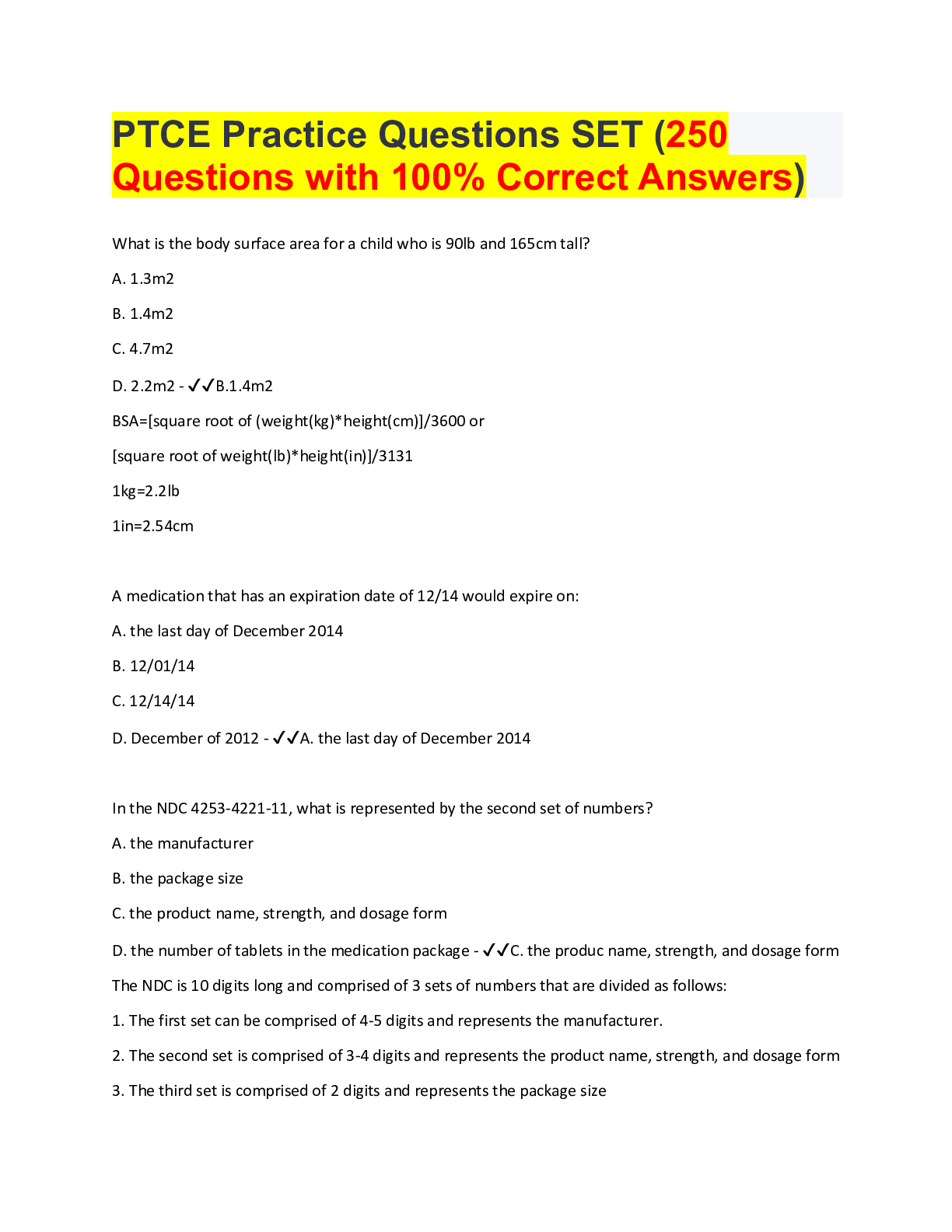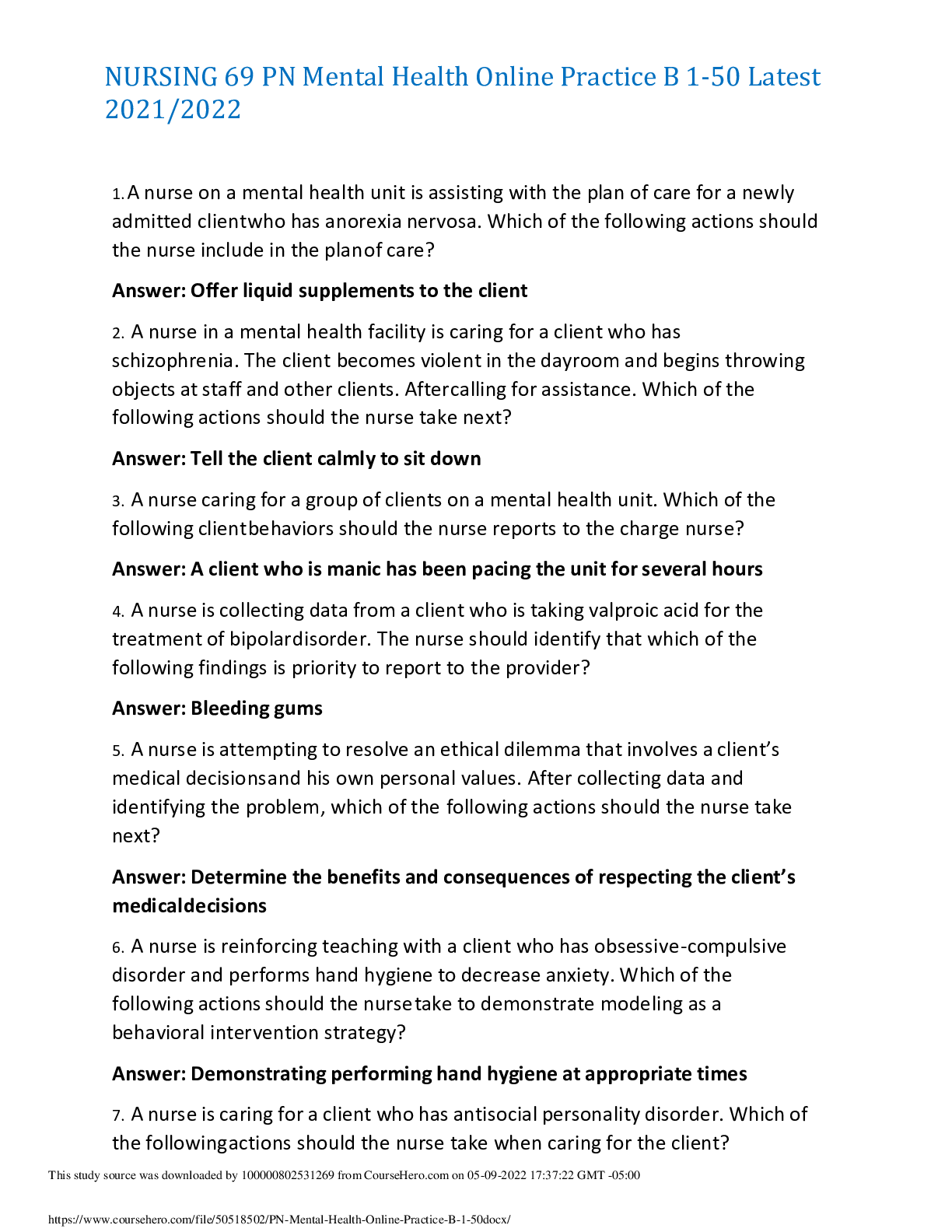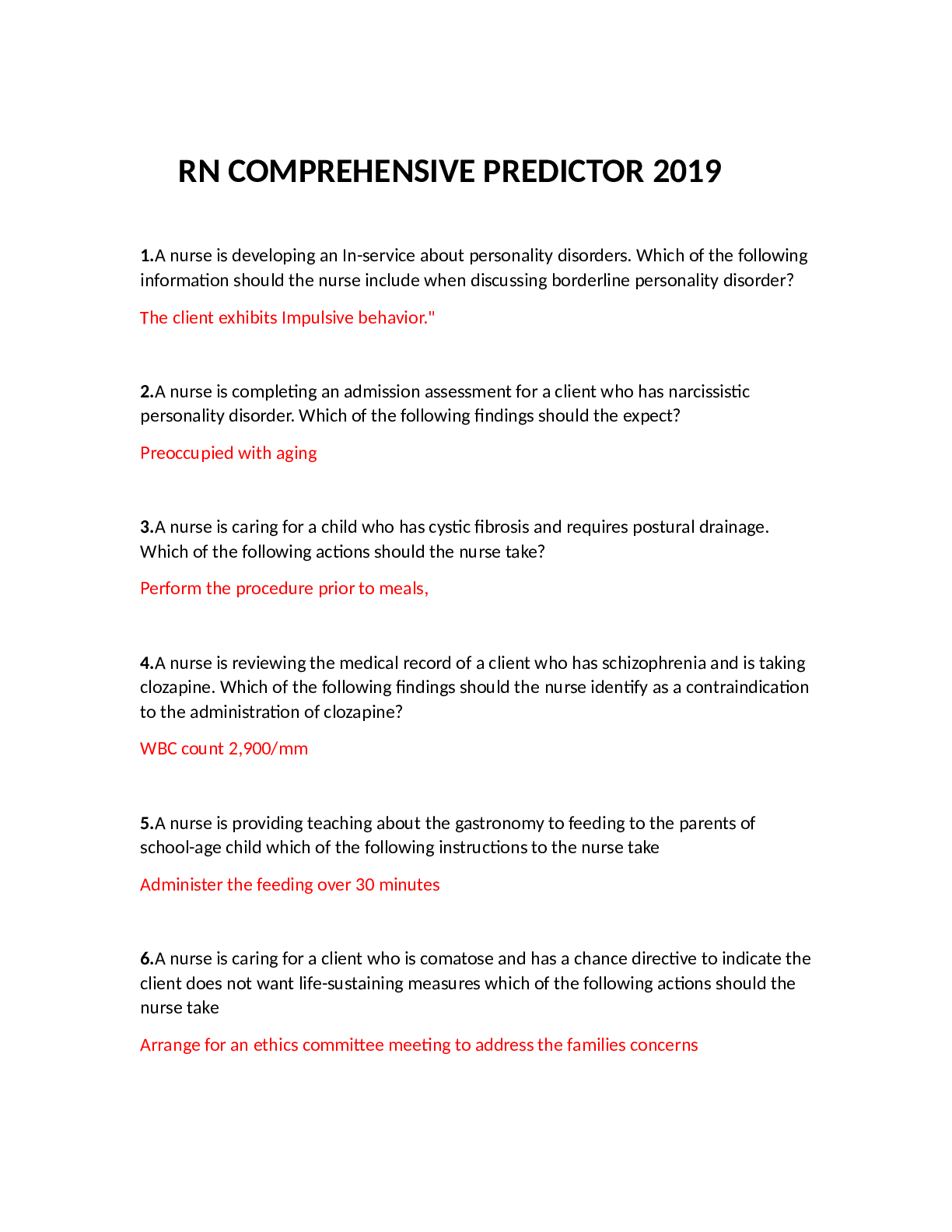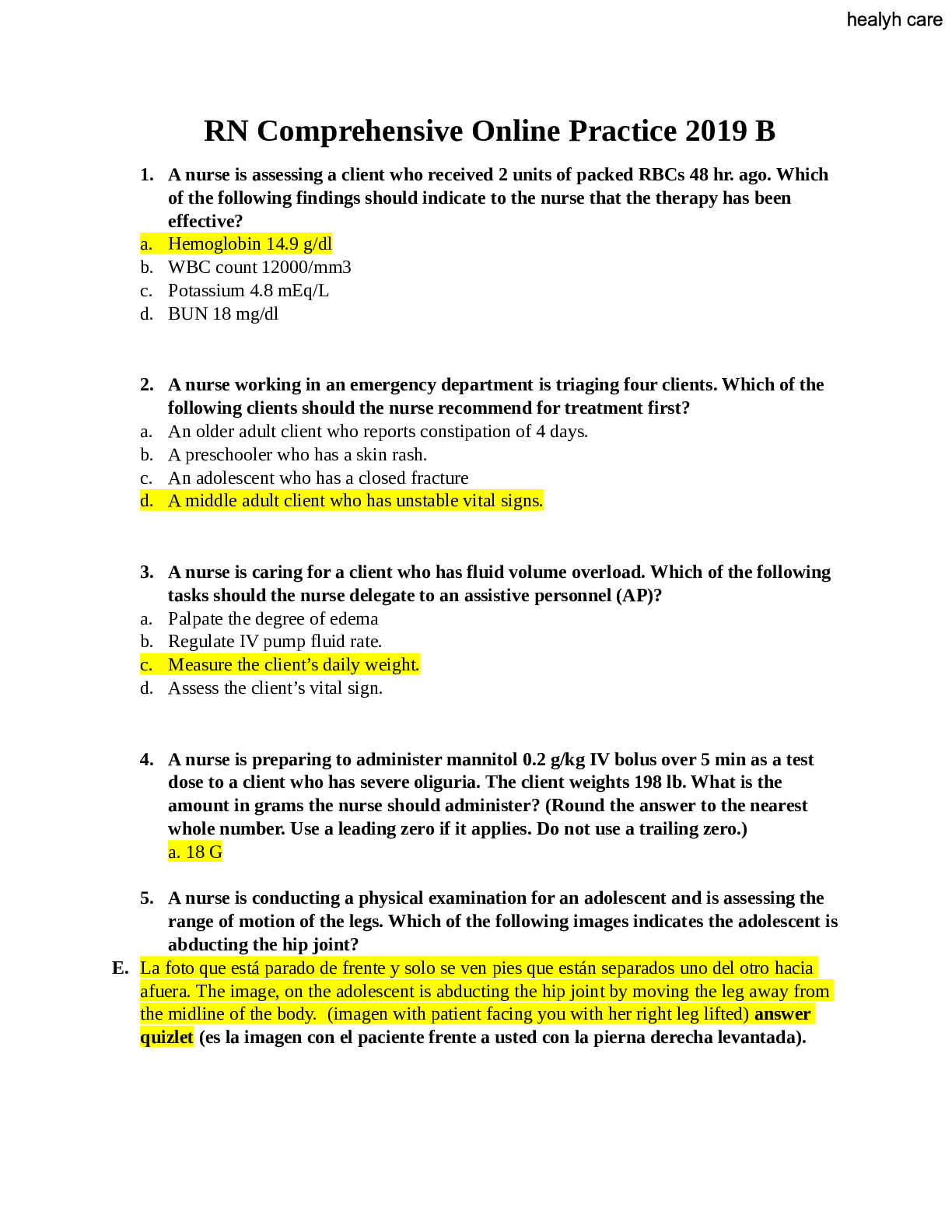*NURSING > QUESTIONS & ANSWERS > NURSING NR 507 Midterm Exam 50 Questions with Revised Answers.(100% Correct) (All)
NURSING NR 507 Midterm Exam 50 Questions with Revised Answers.(100% Correct)
Document Content and Description Below
Question 1.Question : Which substance has been shown to increase the risk of cancer when used in combination with tobacco smoking? Student Answer: Alcohol Steroids Antihistamines Antidepressants... Instructor Explanation: Alcohol interacts with smoke, increasing the risk of malignant tumors, possibly by acting as a solvent for the carcinogenic chemicals in smoke products. No current research supports the remaining options as having an increased effect on the incidence of cancer when used in combination with tobacco smoking. Points Received: 2 of 2 Comments: Question 2.Question : Which term is used to describe a muscle cell showing a reduced ability to form new muscle while appearing highly disorganized? Student Answer: Dysplasia Hyperplasia Myoplasia Anaplasia Instructor Explanation: Anaplasia is defined as the loss of cellular differentiation, irregularities of the size and shape of the nucleus, and the loss of normal tissue structure. In clinical specimens, anaplasia is recognized by a loss of organization and a significant increase in nuclear size with evidence of ongoing proliferation. The remaining options refer to specific changes in the cell. Points Received: 2 of 2 Comments: Question 3.Question : What is the final stage of the infectious process? Student Answer: Colonization Invasion Multiplication Spread Instructor Explanation: From the perspective of the microorganisms that cause disease, the infectious process undergoes four separate stages of progression: (1) colonization, (2) invasion, (3) multiplication, and (4) spread. Points Received: 2 of 2 Comments: Question 4.Question : What is the most common cause of insufficient erythropoiesis in children? Student Answer: Folic acid deficiency Iron deficiency Hemoglobin abnormality Erythrocyte abnormality Instructor Explanation: Similar to the anemias of adulthood, ineffective erythropoiesis or premature destruction of erythrocytes causes the anemias of childhood. The most common cause of insufficient erythropoiesis is iron deficiency. The other options may be causes but are not common ones. Points Received: 2 of 2 Comments: Question 5.Question : Which statement is true concerning the IgM? Student Answer: IgM is the first antibody produced during the initial response to an antigen. IgM mediates many common allergic responses. IgM is the most abundant class of immunoglobulins. IgM is capable of crossing the human placenta. Instructor Explanation: Typically, IgM is produced first (primary immune response), followed by IgG against the same antigen. The other options are not true statements regarding IgM. Points Received: 2 of 2 Comments: Question 6.Question : Where in the respiratory tract do the majority of foreign objects aspirated by children finally lodge? Student Answer: Trachea Left lung Bronchus Bronchioles Instructor Explanation: Approximately 75% of aspirated foreign bodies lodge in a bronchus. The other options are not locations where children aspirate the majority of foreign objects. Points Received: 2 of 2 Comments: Question 7.Question : What is the role of caretaker genes? Student Answer: Maintenance of genomic integrity Proliferation of cancer cells Secretion of growth factors Restoration of normal tissue structure Instructor Explanation: Caretaker genes are responsible for the maintenance of genomic integrity. The other options are not roles assumed by caretaker genes. Points Received: 2 of 2 Comments: Question 8.Question : During an IgE-mediated hypersensitivity reaction, which leukocyte is activated? Student Answer: Neutrophils Monocytes Eosinophils T lymphocytes Instructor Explanation: Of the options provided, only eosinophils are activated during IgE-mediated hypersensitivity reactions. Points Received: 2 of 2 Comments: Question 9.Question : When a patient has small, vesicular lesions that last between 10 and 20 days, which sexually transmitted infection is suspected? Student Answer: Genital herpes Chancroid Syphilis Chlamydia Instructor Explanation: If symptoms occur, the individual may have small (1 to 2 mm), multiple, vesicular lesions that are generally located on the labia minora, fourchette, or penis. They may also appear on the cervix, buttocks, and thighs and are often painful and pruritic. These lesions usually last approximately 10 to 20 days. The other options do not demonstrate these symptoms. Points Received: 2 of 2 Comments: Question 10.Question : What is the action of urodilatin? Student Answer: Urodilatin causes vasoconstriction of afferent arterioles. It causes vasodilation of the efferent arterioles. Urodilatin inhibits antidiuretic hormone secretion. It inhibits salt and water reabsorption. Instructor Explanation: Urodilatin (a natriuretic peptide) inhibits sodium and water reabsorption from the medullary part of collecting duct, thereby producing diuresis. It is not involved in the actions described by the other options. Points Received: 2 of 2 [Show More]
Last updated: 1 year ago
Preview 1 out of 16 pages
Instant download
.png)
Instant download
Reviews( 0 )
Document information
Connected school, study & course
About the document
Uploaded On
Nov 18, 2020
Number of pages
16
Written in
Additional information
This document has been written for:
Uploaded
Nov 18, 2020
Downloads
0
Views
30

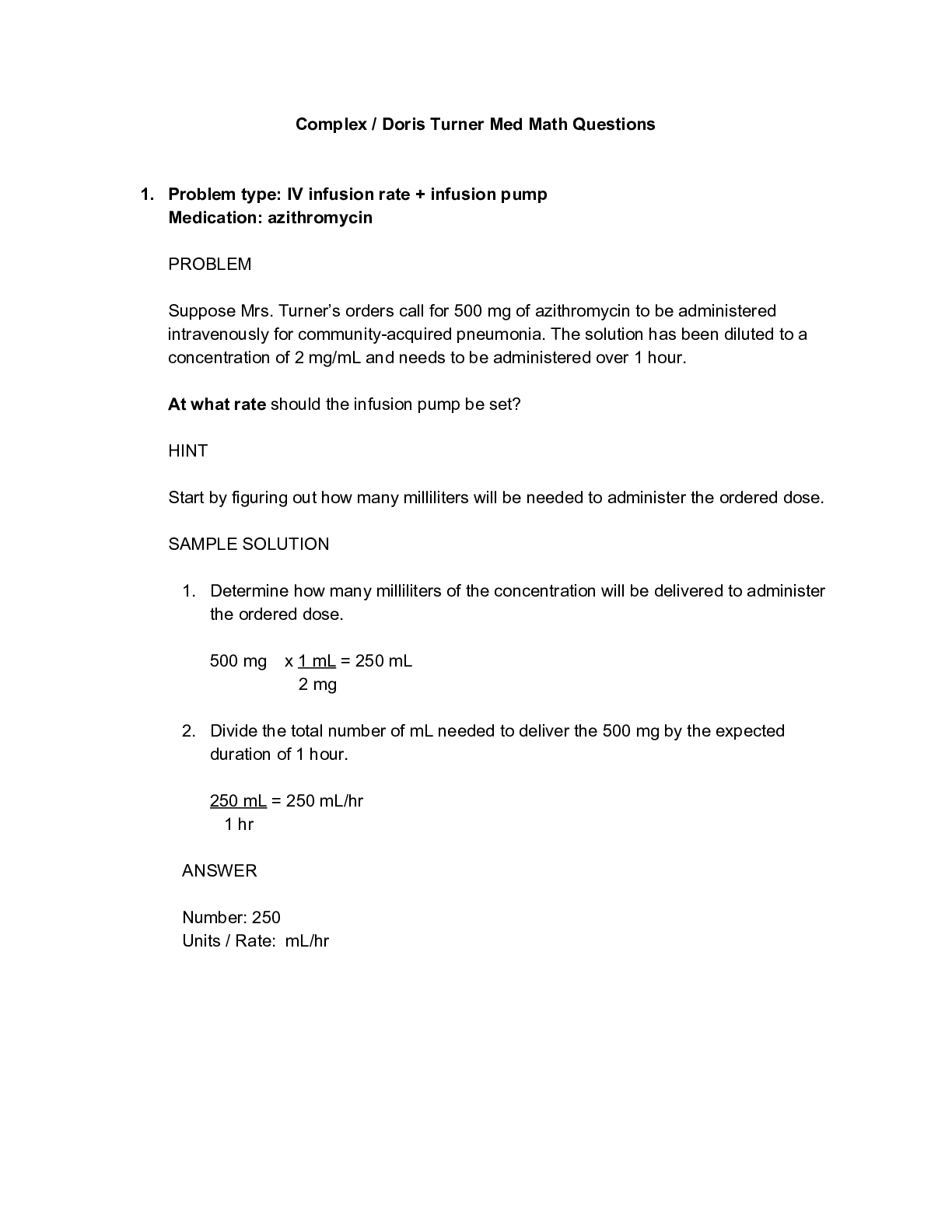





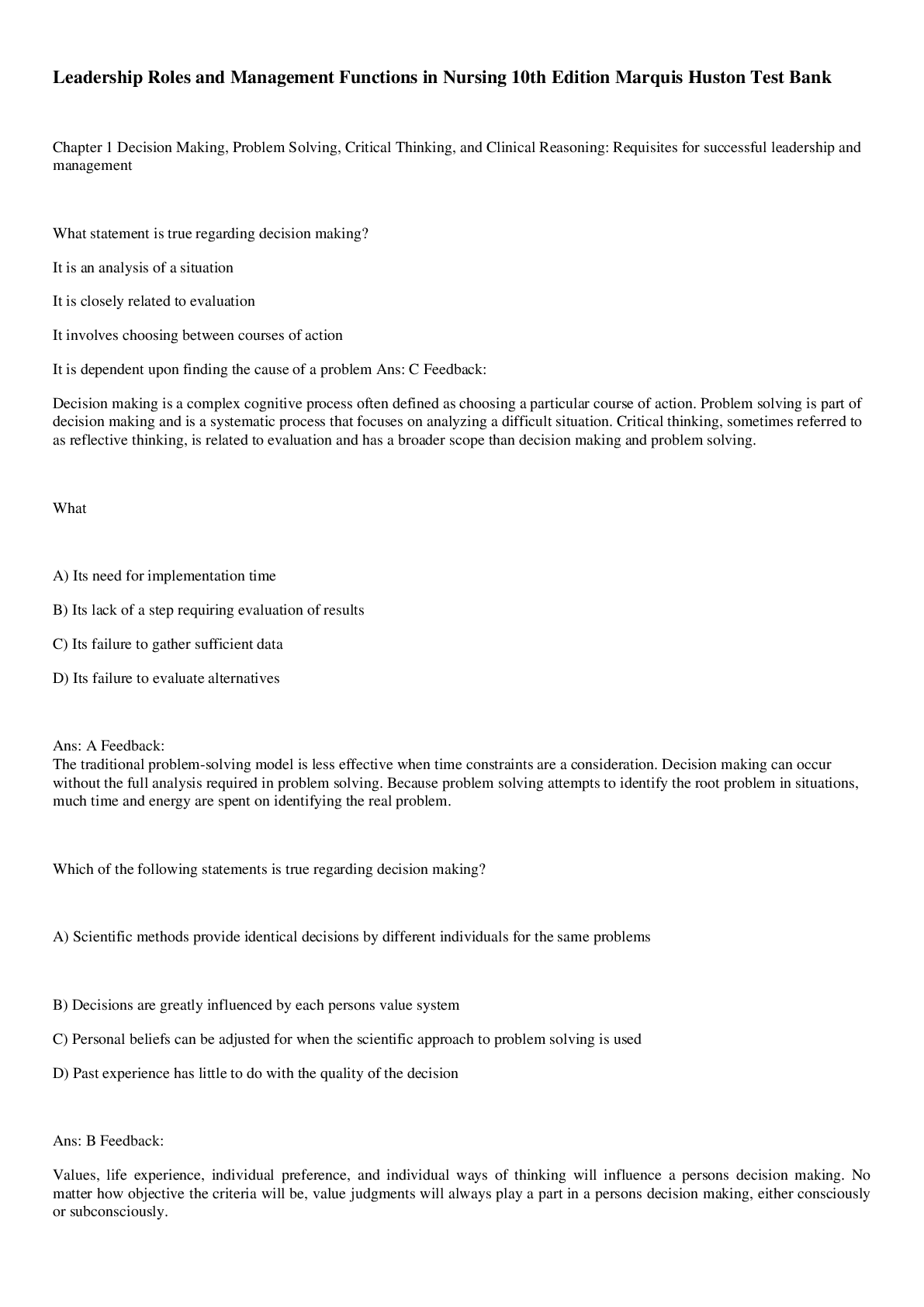


 (1).png)


 A+ Guide.png)




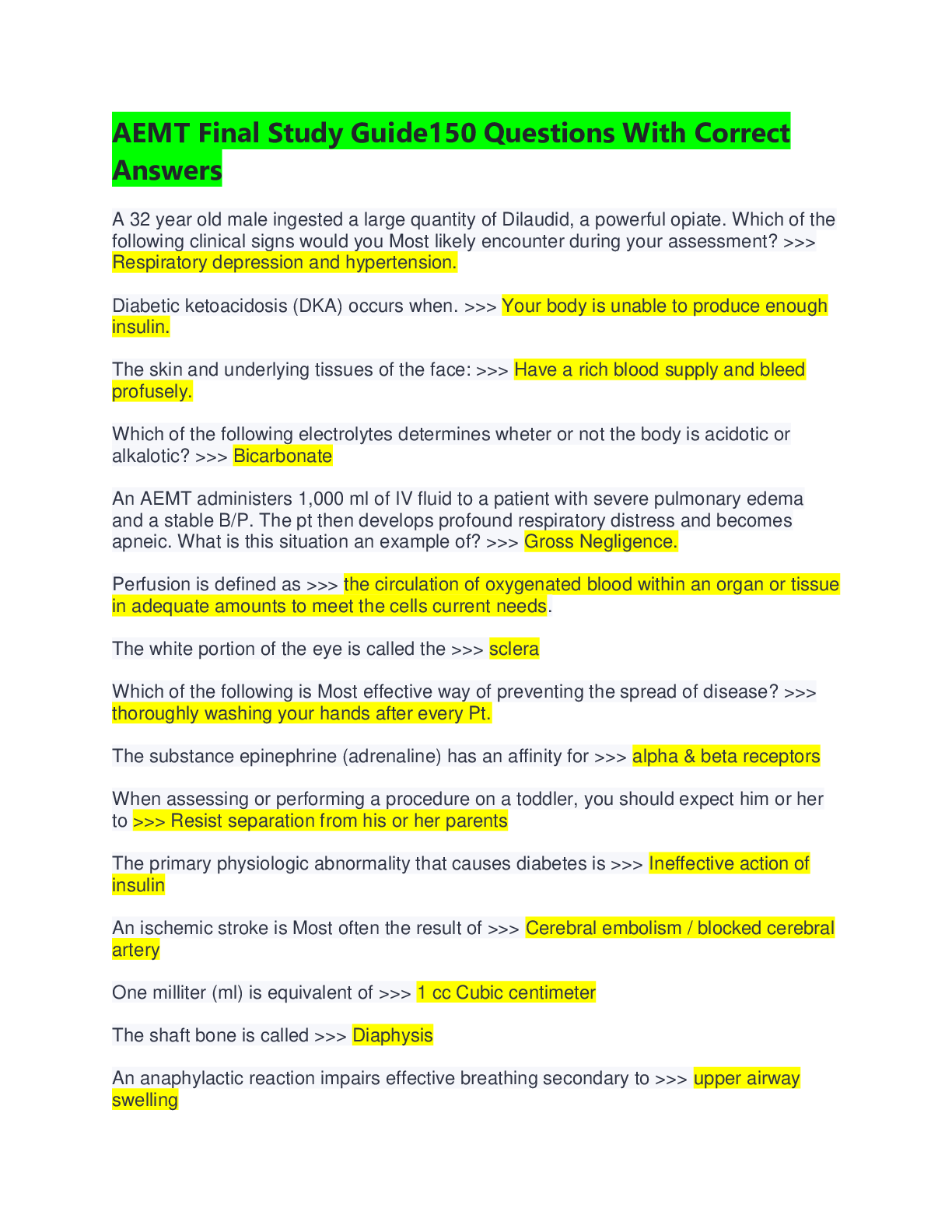


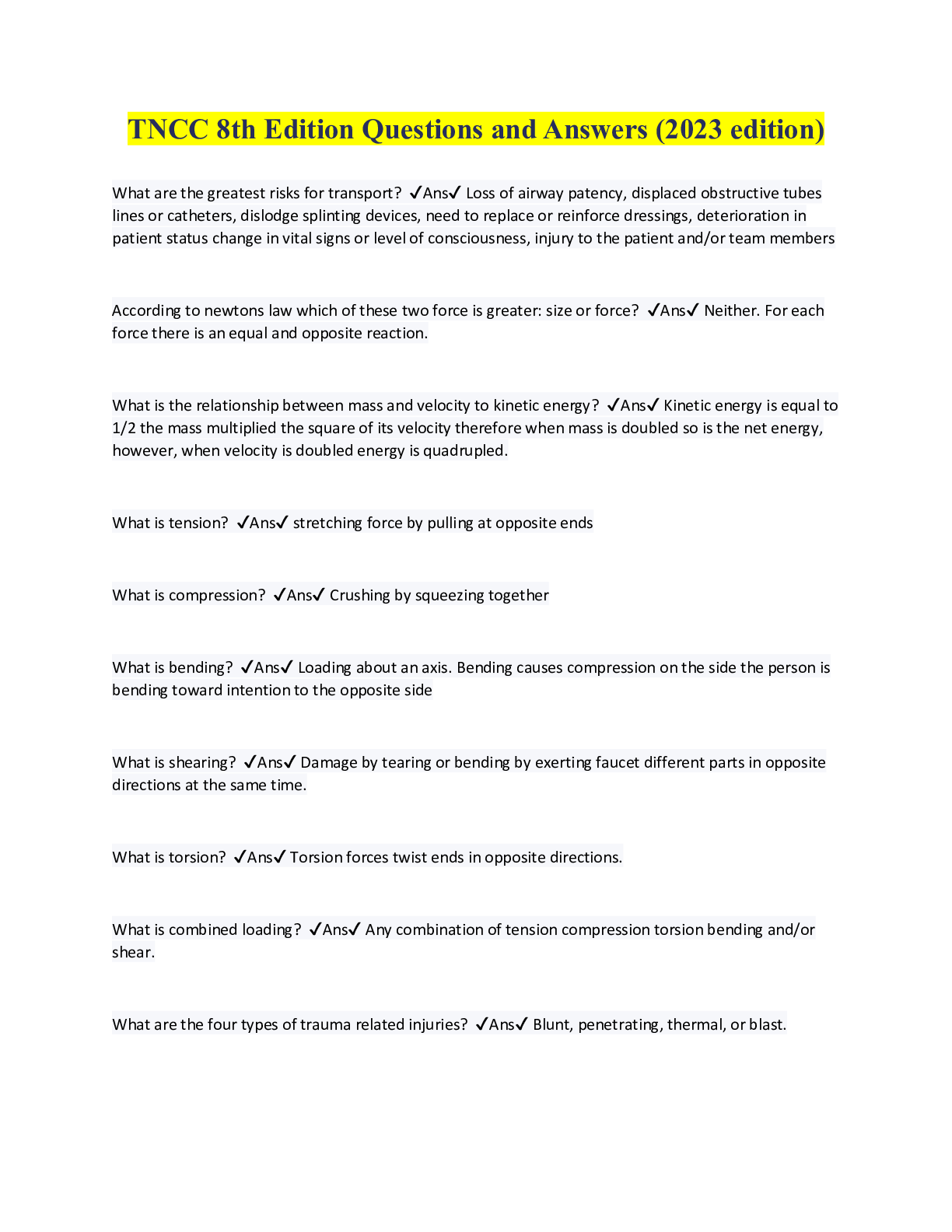

.png)
.png)
